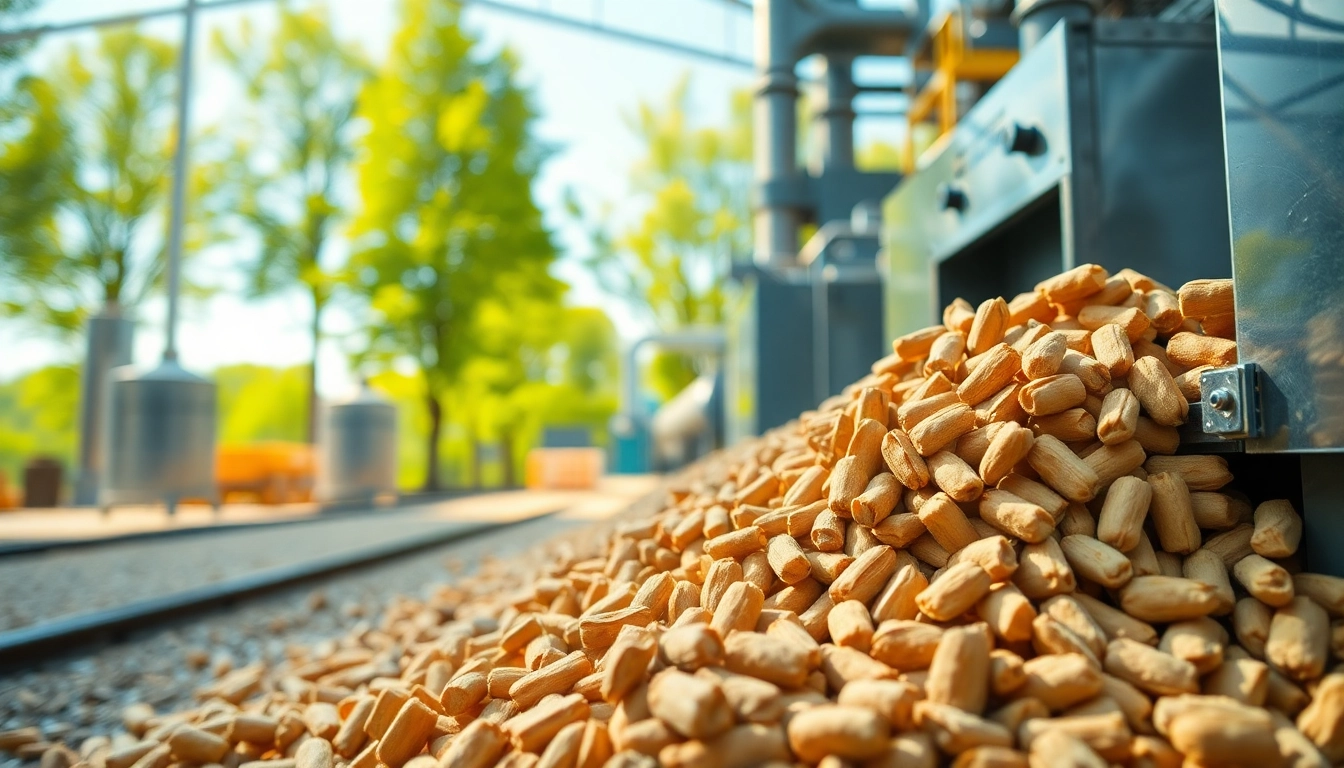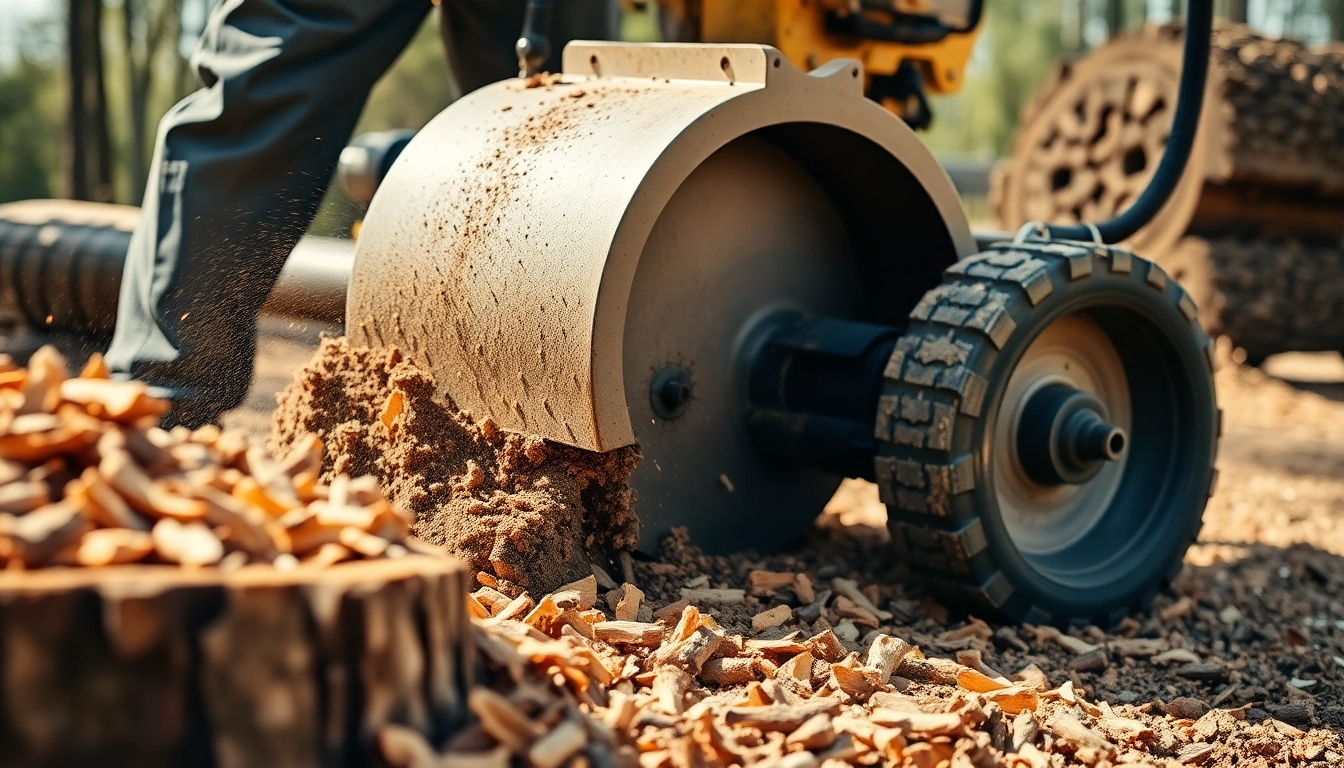Understanding Sustainable Wood Pellets in Europe
Sustainable wood pellets have gained significant traction in the European energy landscape, proving to be a viable and renewable energy source. Made predominantly from compressed sawdust, wood shavings, and other biomass materials, these pellets are not only efficient but also environmentally friendly. This article dives deep into the facets of Sustainable wood pellets Europe, exploring their composition, role in renewable energy, benefits, market trends, environmental impacts, sourcing tips, and future innovations.
Definition and Composition of Wood Pellets
Wood pellets are small cylindrical pieces of compressed wood that serve as a fuel source. Their composition mainly includes:
- Raw Material: Common raw materials are sawmill residues, wood shavings, and agricultural residues.
- Additives: Depending on the quality and intended use, additives such as binders (often natural starch) may be introduced to improve durability and performance.
- Moisture Content: An ideal moisture level between 6-8% is crucial for optimal combustion efficiency.
This simple yet effective composition contributes to their high energy density, making them an efficient fuel source.
The Role of Wood Pellets in Renewable Energy
Wood pellets play a critical role in Europe’s transition towards renewable energy. As countries strive to meet renewable energy targets, wood pellets offer a sustainable alternative to fossil fuels. They support various applications, from residential heating systems to large-scale industrial boilers.
The European Union’s emphasis on reducing greenhouse gas emissions aligns well with the use of wood pellets. They contribute to lowering carbon footprints by providing a renewable energy source that, when burned, releases carbon dioxide that is roughly equivalent to the amount absorbed by trees during their growth, thus closing the carbon cycle.
Key Benefits of Sustainable Wood Pellets
- Renewability: Unlike fossil fuels, which can deplete natural resources, sustainable wood pellets are produced from renewable sources.
- Carbon Neutrality: The combustion of wood pellets is generally considered carbon neutral due to the cyclic nature of carbon absorption and emission in trees.
- Energy Efficiency: Wood pellets are dense energy sources, providing high heat output with lower emissions than traditional fossil fuels.
- Waste Reduction: Utilizing wood waste from lumber production to create pellets promotes sustainable practices and reduces landfill waste.
Market Trends for Sustainable Wood Pellets in Europe
Current Demand and Supply Dynamics
The demand for wood pellets in Europe has experienced steady growth, with consumption reaching millions of tons annually. As energy policies favor renewable sources, the market is propelled by both domestic production and imports.
Current supply dynamics indicate a significant reliance on imported wood pellets, particularly from regions outside Europe, to meet rising demand. Key factors influencing this situation include policies supporting biomass energy, fluctuations in fossil fuel prices, and technological advancements in pellet production.
Major Producers and Regions
While several countries within Europe produce wood pellets, notable producers include Sweden, Austria, and Germany. These countries benefit from substantial forestry resources and infrastructure for pellet production, enabling them to cater not only to domestic needs but also to export markets.
Regions such as the Baltic States possess abundant wood resources, contributing to both regional and global pellet supplies. Their strategic positioning allows for efficient transportation of pellets throughout Europe.
Predictions for Future Growth in the Market
The future growth of the wood pellet market in Europe looks promising. Analysts predict increasing consumer preference for renewable energy coupled with stringent legislative measures to combat climate change will sustain demand growth. As alternative energy sources are further explored, wood pellets are likely to remain a fundamental component of Europe’s energy strategy.
Investments in production technologies, improvements in wood sourcing, and better logistical frameworks will also play crucial roles in shaping market dynamics in the coming years.
Environmental Impact of Sustainable Wood Pellets in Europe
Carbon Emissions and Climate Goals
As climate change strategies evolve, understanding the carbon emissions linked to various energy sources has become imperative. Wood pellets release significantly lower emissions compared to coal and natural gas when burned for energy. This reduction supports European countries in adhering to their climate goals under international agreements.
The lifecycle assessment of wood pellets, from sourcing to combustion, is essential in quantifying their carbon impacts effectively. Sustainable forest management practices are pivotal to ensure that the supply chains for these pellets reinforce climate action rather than counteract it.
Forest Management and Sustainability Practices
Effectively managing forests is critical to producing sustainable wood pellets. Appropriate practices such as selective logging, replanting, and adherences to certification standards are essential for preserving biodiversity while ensuring a reliable supply of wood.
Certifications like FSC (Forest Stewardship Council) and PEFC (Programme for the Endorsement of Forest Certification) indicate that wood pellets are produced from responsibly managed forests, thus supporting both ecological and economic sustainability.
Acting Against Deforestation and Promoting Biodiversity
With rising concerns about deforestation, sustainable wood pellet production practices are vital in protecting forest ecosystems. Implementing sound harvesting techniques and policies to minimize habitat destruction ensures wood pellet sourcing promotes rather than harms biodiversity.
Furthermore, initiatives aimed at reforestation and creating wildlife reserves can counterbalance the impact of sourcing wood for pellets, promoting a more balanced ecological footprint.
Choosing Sustainable Wood Pellets: What to Look For
Certifications and Quality Standards
When selecting wood pellets, consumers and businesses should prioritize products that meet established quality standards and certifications. Look for labels indicating compliance with sustainability criteria to ensure that the pellets are produced ethically and sustainably.
The highest quality pellets typically have lower ash content, higher density, and effective moisture levels, all of which directly impact combustion efficiency and overall performance.
Price Comparisons and Value Assessment
Price is a significant factor for consumers considering wood pellets as an energy source. However, comparing prices should extend beyond initial costs to encompass long-term value, considering factors such as heat output, efficiency, and environmental impact.
Assessing the total cost of ownership, including delivery and storage, will provide a more accurate picture of the value offered by different wood pellets on the market.
How to Source Locally for Sustainability
Sourcing wood pellets locally can significantly reduce carbon footprints associated with transportation and support local economies. Establishing relationships with local suppliers who practice sustainability ensures that the pellets used are produced responsibly, supporting the health of regional forests.
Many areas of Europe have local distributors and producers that provide high-quality pellets at competitive prices while adhering to environmentally friendly manufacturing principles.
Future Innovations in Sustainable Wood Pellets in Europe
Emerging Technologies in Production
As the demand for sustainable energy alternatives continues to grow, innovations in wood pellet production are becoming crucial. Advances in pyrolysis and gasification, for example, may enhance the efficiency of wood pellet manufacturing by converting wood biomass into syngas or biochar that can be processed further into pellets.
Integrating digital technologies, such as AI and IoT, can also optimize the production process and supply chain, ensuring better resource management and reduction of waste in the production cycle.
Alternative Feedstocks and Their Potential
Research into alternative feedstocks, including agricultural residues and waste materials, is gaining traction. Utilizing such feedstocks can lead to reduced competition for wood resources and enhance the sustainability of wood pellet production.
Exploring various biomass sources helps diversify the market and enables producers to become less reliant on virgin wood, promoting a circular economy approach.
Collaborations and Industry Initiatives for Sustainability
Collaborations across the wood pellet sector, including producers, nonprofits, and government agencies, foster innovation and best practices. Industry initiatives aimed at promoting sustainable wood sourcing, establishing clear guidelines, and sharing resources can significantly bolster the sector’s growth while preserving the environment.
Engagement in platforms and forums dedicated to discussing challenges and opportunities will help drive the wood pellet industry towards sustainability while addressing ecological concerns comprehensively.



